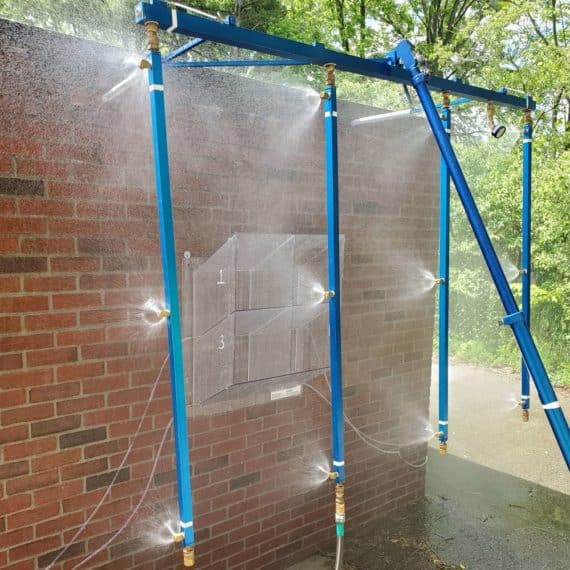ASTM is a regulatory organization that develops technical standards across more than 90 sectors. These ASTM testing standards are designed to enhance safety and improve quality of the materials, products, services, and systems in our world.
As an unbiased third-party, ASTM has been adopted by local, state, and national governments as best practice when it comes to commercial building energy audits. From water leak detection to air chamber testing, these standards are designed to ensure your building is safe, durable, and efficient.
Choosing to undergo ASTM testing gives you documented proof that your building meets the highest standards. Building Envelope Allies is your partner in getting there. Read on to find out how to get the best commercial energy audit and the most out of your ASTM testing.
ASTM standards rely on precise testing specifications
ASTM sets the gold standard for construction and building management specifications. Each standard relies on specific parameters to determine whether a building passes inspection. Let’s take a closer look at ASTM E1105, for example.
ASTM E1105 checks for water penetration in windows, doors, skylights, and curtain walls. Testing involves applying water to the outdoor face and edges of a surface, while maintaining static air pressure on the indoor side.
To perform the test, a spray rack is set up against the surface being tested. The spray rack discharges water uniformly across the surface, spraying at a rate of 5 gph/ft² for at least 15 minutes.
Field technicians have the option to choose between ASTM E1105 procedures A and B, per site-specific requirements. Procedure A requires a specified air pressure differential to be maintained throughout the full 15 minutes. Procedure B utilizes cyclic static pressure. It requires 3-4 cycles of 5 minutes with static air pressure applied and 1 minute with air pressure released.
Both Procedures A and B require a technician to observe the interior for water penetration. If water penetrates the assembly, action must be taken to fix the leaks. If no water penetrates, the assembly meets E1105 standards.
But what happens if the equipment used for your ASTM test doesn’t meet requirements? How can you be certain that your commercial energy audit is accurate?
Only calibrated equipment can meet ASTM standards
Regularly calibrating the equipment that’s used in testing is the only way to ensure precise adherence to E1105 and other ASTM standards. As Building Envelope Allies, we have more than 35 years of experience in ASTM testing and our equipment undergoes regular calibration.
Continuing with our example of ASTM E1105, the rack must spray at exactly 5 gph/ft² for at least 15 minutes to ensure the surface meets the exact testing conditions set by ASTM. There must be a consistent spray of water over a specific area at a given volume over time, while maintaining a specific pressure difference across the surface — and that’s a lot of variables.

During your ASTM E1105 testing, highly trained technicians are outside operating the spray rack and inside looking for signs of water penetration. Most of our energy audit technicians have been with Building Envelope Allies for 10+ years, and they bring with them extensive knowledge of our equipment and unparalleled experience testing in different climates and weather conditions.
Building Envelope Allies delivers accurate energy audit procedures for precise results you can trust. Request a quote for your project now.







